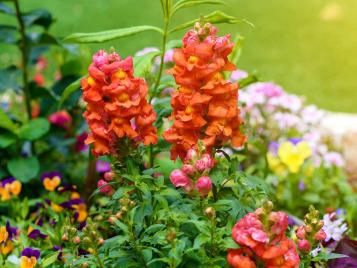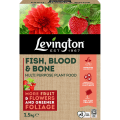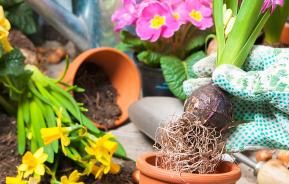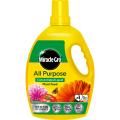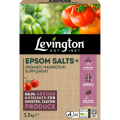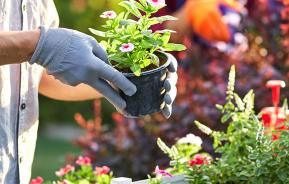Liquid vs. granules
Well-fed plants are healthy plants. It’s so simple to work feeding into your gardening routine - Miracle-Gro All Purpose Concentrated Liquid Plant Food contains the bio-stimulant Humifirst® which stimulates growth, root development and improves plant resistance.
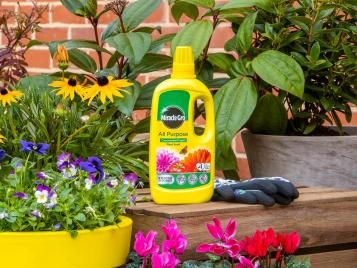
As every garden is different, gardeners often turn to an All-Purpose product to fulfil multiple needs. The Miracle-Gro plant food range is diverse enough to be used generally and also has products to achieve precise feeding needs.
For feeding plants organically, you’ll want something like Performance Organics Liquid Plant Food, a high-performance feed that grows plants twice as big but does so completely organically.
As it’s 100% plant-based, it’s suitable for vegan growers too. Use as you would any other liquid feed: in pots, containers, borders and beds and you’ll see results in seven days.
Generally, liquid feeds are quick to act and are therefore best for pots and containers where you need to control the dose. Within Miracle-Gro’s range, you'll also find continuous release all-purpose feeds and these offer something different entirely.
Continuous release products have a special coating that controls the rate of release, distributing nutrients when conditions are right for healthy plant growth.
This feed is more suitable for beds and borders - you can scatter the granules over a large surface area, gently forking them in, and they're fed for 6 months.
For every need
Also within the Miracle-Gro Continuous Release range, you’ll find products to suit every need. The Azalea, Camellia & Rhododendron Plant Food is for ericaceous, acid-loving plants. The most commonly grown ericaceous plants are azaleas, camellias and rhododendrons. These plants thrive in acidic soils (pH 4.5 to 5.5). If they are grown in soil where the pH is too high (alkaline), they produce poor growth, few flowers and the leaves tend to become yellowish in colour. Use from March to September for better blooms throughout summer.

To target specific plant needs, for example plants that have many flowers, root crops or more fruiting, you can use soil supplements to feed the soil. A soil supplement might only have one or two plant nutrients but will create the perfect conditions for your plant.
For instance, acidic soils which need a boost are given Sulphate of Iron; those in need of alkaline treatment are given Lime Soil Improvers; plants with yellow leaves requiring more nitrogen can be given Sulphate of Ammonia; while magnesium-hungry plants, like tomato and potato crops, may benefit from Magnesium Salts.
Bold borders
You can look to treat plants which require a helping hand, too. Root veg, such as parsnips or turnips may benefit from root-building feeds and Bone Meal fertilisers deliver this—they’re also great for trees and shrubs.
Plants which are about to go into flower or fruit will need a little bit of everything, released at different times. The nitrogen in Fish, Blood and Bone Fertiliser promotes leafy growth early, while the slow release elements, like phosphate, gradually develops roots, and potassium will boost fruits and flowers when the time comes.
To this end, Superphosphate can help establish plants quickly to help ripen plants faster. For a real ripening boost, add Sulphate of Potash to fruiting and flowering plants such as tomatoes.
So, whether your borders are bursting with structural shrubs and trees, organically-grown crops or acid-loving camellias, there’s a feed fit for the job.
